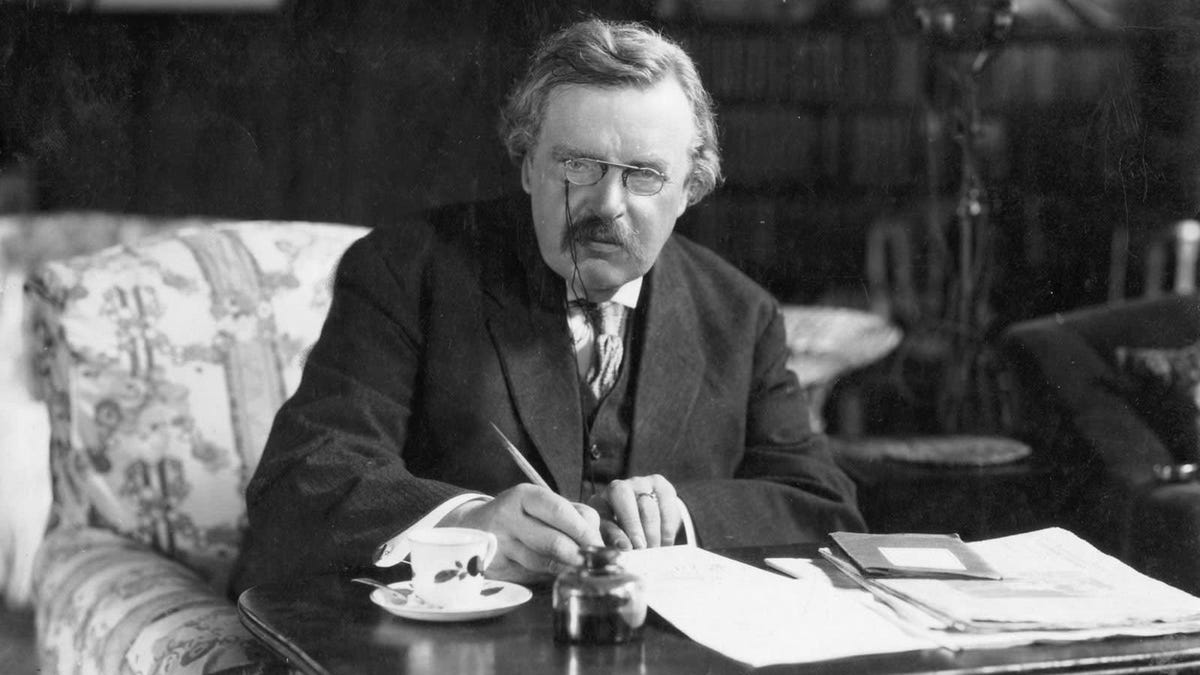Don't Tear Down Chesterton's Fence - 4 minutes read
 Don't Tear Down Chesterton's Fence
Don't Tear Down Chesterton's FenceThere’s this incredibly stupid phenomenon in Hollywood studios. When a new studio exec replaces an old one, they throw out all the old film projects in development, and they start new ones. You’ve seen this happen in your own industry (and so have I), because this is what new bosses do. They change things. That’s usually the point of putting someone new in charge. When it works right we call it reform, when it doesn’t we call it a disaster. And there’s a way to make sure you do it right.
G. K. Chesterton, author and C. S. Lewis drinking buddy, explained the strategy in his book The Thing: Why I Am a Catholic:
In the matter of reforming things, as distinct from deforming them, there is one plain and simple principle; a principle which will probably be called a paradox. There exists in such a case a certain institution or law; let us say for the sake of simplicity, a fence or gate erected across a road. The more modern type of reformer goes gaily up to it and says, “I don’t see the use of this; let us clear it away.” To which the more intelligent type of reformer will do well to answer: “If you don’t see the use of it, I certainly won’t let you clear it away. Go away and think. Then, when you can come back and tell me that you do see the use of it, I may allow you to destroy it.”
“Chesterton’s fence” is now a popular term for the havoc wreaked by overeager reformers and revolutionaries. It’s the “red tape” ripped away by business-friendly politicians, before a deregulated industry collapses or kills off its customers. It’s the laid-off staff who, it turns out, were slow at their own jobs because they were doing everyone else’s. It’s what breaks when you move fast and break things.
Chesterton invented his fence to argue against sweeping social reforms that would decenter “domesticity” and family life. He was really mad at the idea of daycare. But while his argument is one of conservation, it’s not inherently conservative.
You know who really saw the use of capitalism? Karl Marx and Friedrich Engels. Seriously, the first chapter of the Communist Manifesto lays out how capitalists upended feudalism and got more shit done in one century than all of humanity had beforehand: industrialization, chemistry, steam power, trains, telegraphs, modernized agriculture. “What earlier century had even a presentiment that such productive forces slumbered in the lap of social labour?”
They point out that all this productivity also concentrated wealth in the hands of the few—and that this is in fact capitalism’s purpose. Their entire manifesto, love it or spit blood about it in blog comments, is built on a thorough understanding of capitalism as a vast improvement on feudalism. The most controversial revolutionaries in history respect Chesterton’s fence. Whatever changes you’re looking to make, whatever thing you’re put in charge of, you can respect the fence too.
Source: Lifehacker.com
Powered by NewsAPI.org
Keywords:
G. K. Chesterton • Hollywood • G. K. Chesterton • C. S. Lewis • Object (philosophy) • Catholicism • Matter • Principle • Principle • Paradox • Institution • Law • OR gate • G. K. Chesterton • Red tape • Business • Deregulation • Industry • Employment • Employment • G. K. Chesterton • Family • Argument • Conservatism • Capitalism • Karl Marx • Friedrich Engels • The Communist Manifesto • Capitalism • Feudalism • World population • Industrialisation • Chemistry • Steam engine • Telegraphy • Modernization theory • Agriculture • Productive forces • Society • Labour economics • Productivity • Wealth • Capitalism • Teleology • Manifesto • Capitalism • Feudalism • G. K. Chesterton •